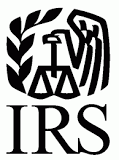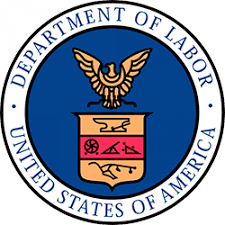The Department of Labor (DOL) published significant updates to its Voluntary Fiduciary Correction Program (VFCP) on January 15, 2025. These updates are designed to make it easier for employers and plan fiduciaries to avoid potential DOL civil enforcement and penalties if they voluntarily correct certain fiduciary breaches.
Key Changes – Addition of Self-Correction Features
The updated VFCP adds two new self correction categories, which better align the DOL’s VFCP with the IRS’s Employee Plans Compliance Resolution System (EPCRS), so that common issues subject to correction under both programs (to gain relief from both IRS and DOL enforcement) can be now be self-corrected. Previously, many failures that could be self-corrected under the IRS’s EPCRS required a formal VFCP application.
New Self-Correction Tool for Delinquent Contributions and Loan Payments
The most significant update to the VFCP is the introduction of a new self-correction tool, which employers and other plan officials can use to remedy delays in transmitting participant contributions and participant loan repayments to retirement plans. These are the most common fiduciary breaches requiring correction under both EPCRS and VFCP.
The VFCP imposes six broad requirements for self-correction of delinquent participant contributions or loan repayments involving retirement plans:
1. $1,000 Earnings Limit. The amount of Lost Earnings on the delinquent participant contributions or loan repayments must be $1,000 or less
2. 180 Limit. The delinquent participant contributions or loan repayments must have been remitted to the plan within 180 calendar days from the date of withholding from participants’ paychecks or receipt by the employer.
3. Lost Earnings Calculation Requirement. The Lost Earnings must be calculated using the DOL online calculator, starting from the “Date of Withholding or Receipt” (NOT from the earliest date the contributions could have been made to the plan)
4. SCC Notice Electronic Filing. The employer or other self-corrector must electronically file a Self-Correction Component Notice with the DOL, which must include:
- the name and an email address for the self-corrector;
- the plan name;
- the plan sponsor’s nine-digit employer identification number (EIN);
- the plan’s three-digit number (PN);
- the Principal Amount;
- the amount of Lost Earnings and the date paid to the plan;
- the Loss Date (for purposes of the SCC, the Date(s) of Withholding or Receipt); and
- the number of participants affected by the correction.
5. Penalty of Perjury Statement. A plan fiduciary with knowledge of the transaction that is being self-corrected and each Plan Official seeking relief under the program must sign a penalty of perjury statement.
6. Self-Correction Checklist and Document Retention. Self-correctors must prepare a SCC Retention Record Checklist and collect a list of documents, and provide the completed checklist and required documentation to the plan administrator. The checklist and documents include:
- A brief statement explaining why the employer retained the participant contributions or loan repayments instead of timely forwarding such amounts to the plan;
- Proof of payment, showing the actual date the plan received the corrective payment;
- Lost Earnings printout from the DOL online Calculator;
- A statement describing policies and procedures (if any) that the employer put into place to prevent future delinquencies of participant contributions or loan repayments;
- A copy of the SCC Notice Acknowledgement and Summary page received from EBSA after electronic submission of the SCC notice; and
- The required Penalty of Perjury statement
Also Note: Self-correction does not relieve plans from reporting delinquent participant contributions on the plan’s Form 5500 or Form 5500-SF, as applicable.
Self-Correction for Certain Participant Loan Failures Self-Corrected Under the Internal Revenue Service’s Employee Plans Compliance Resolution System (EPCRS.)
The updated VFCP also adds a new Self-Correction Component for participant loan failures, which allows self-correction of the following transactions, provided that they are eligible for, and have been self-corrected under, the IRS’s EPCRS:
- Loans, the terms of which did not comply with plan and Code provisions concerning amount, duration, or level amortization, or loans that defaulted due to a failure to withhold loan repayments from the participant’s wages;
- The failure to obtain spousal consent for a plan loan;
- Loans that exceed the number permitted under the terms of the plan; and
- Any eligible inadvertent failure relating to a participant loan that is self-corrected in accordance with EPCRS
Other VFCP Changes
The updated VFCP makes some additional changes, that will make it easier for employers to use the program, including
Expanded Scope of Eligible Transactions: The VFCP now covers a wider range of transactions that can be corrected. This includes transactions that were previously ineligible, such as certain types of excess contributions.
Clarification of Existing Corrections: The DOL has clarified the types of transactions that are already eligible for correction under the VFCP. This will help employers and plan officials determine whether they can take advantage of the program.
Simplified Procedures: The DOL has simplified the administrative and procedural requirements for using the VFCP. This will make it easier and less time-consuming for employers and plan officials to correct fiduciary breaches.
Updated Class Exemption: The DOL has amended the VFCP class exemption to reflect the changes to the program.
The updated VFCP goes into effect on March 17, 2025.

